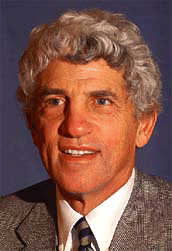Robert A. Sofferman, MD, Professor of Otolaryngology at the University of Vermont in Burlington, noted that with some larger thyroid nodules, specimens can be obtained without using US. However, US-guided FNA is preferable, as it allows biopsy of specific areas that may have suspicious features within the nodule, he added.
Explore This Issue
February 2008In addition, a cytopathologist may be available on-site in some office-based settings, which helps to simplify the process of obtaining a workup, said Dr. Sofferman.
In Dr. Steward’s practice, results are back from the lab within a week and are then explained to patients at a follow-up visit. I avoid giving biopsy results over the phone, he said. He discusses patients whether their biopsy is benign, suspicious, malignant, or nondiagnostic.
How results are interpreted will vary from office to office, noted Dr. Terris. There’s a relatively wide variability in the skill set of cytopathologists, he explained. It’s also worth noting that the yield of biopsy probably depends to some extent on the skill set of the physician obtaining the aspirate.
Who will perform these procedures in the office setting can depend on referral patterns and circumstances of the medical practice, added Dr. Terris. He performs few US-guided FNABs because an endocrinologist in the same practice likes doing them and has the skills and background to acquire superb results.
Repeat Biopsies
Patients who receive nondiagnostic or inadequate results usually undergo a repeat US-guided FNAB at a follow-up visit, said Dr. Steward. Generally, physicians obtain an adequate sample in about half these individuals. Some cystic nodules are notoriously difficult for obtaining and adequate sample, he said.
Patients with a persistent thyroid nodule that is nondiagnostic on two separate occasions are offered a third attempt at biopsy in-office or through a hospital or are offered surgery, said Dr. Steward.
If a specimen is inadequate for a diagnosis, Dr. Sofferman accrues three or four patients and has them come into the office when an on-site cytopathologist is available. We sample them one at a time and have the cytopathologist look at the specimens right there to determine if the sample is adequate, he said. If samples still aren’t adequate, the patient may need to be referred for surgery, he explained.
Surveillance of the thyroid nodule is also an option, noted Dr. Terris.
Coding Information
Another important component of performing US-FNAB is knowing what CPT codes to use, said Dr. Steward. A code exists for diagnostic US (76536), whereas a separate code (10022) is used for US-guided FNAB, he said.

Leave a Reply